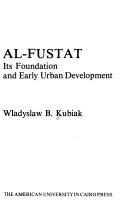The Egyptian Predynastic And State Formation
Alice Stevenson.

Overview
When the archaeology of Predynastic Egypt was last appraised in this journal, Savage (2001a, p. 101) expressed optimism that ‘‘a consensus appears to be developing that stresses the gradual development of complex society in Egypt.’’ The picture today is less clear, with new data and alternative theoretical frameworks challenging received wisdom over the pace, direction, and nature of complex social change. Rather than an inexorable march to the beat of the neo-evolutionary drum, primary state formation in Egypt can be seen as a more syncopated phenomenon, characterized by periods of political experimentation and shifting social boundaries. Notably, field projects in Sudan and the Egyptian Delta together with new dating techniques have set older narratives of development into broader frames of reference. In contrast to syntheses that have sought to measure abstract thresholds of complexity, this review of the period between c. 4500 BC and c. 3000 BC transcends analytical categories by adopting a practice-based examination of multiple dimensions of social inequality and by considering how the early state may have become a lived reality in Egypt around the end of the fourth millennium BC




















